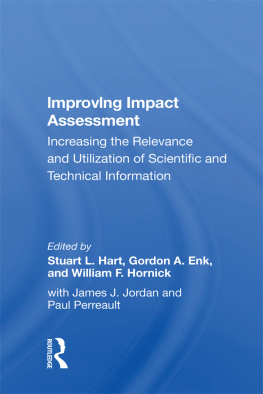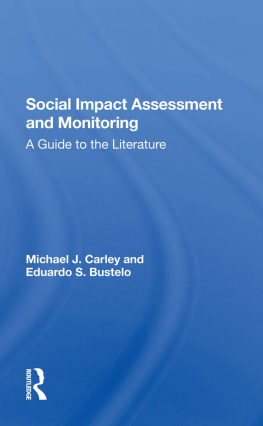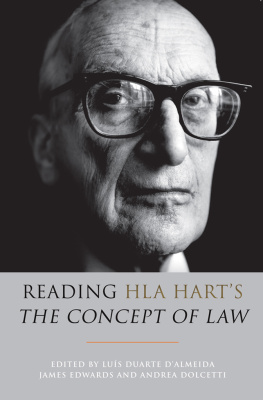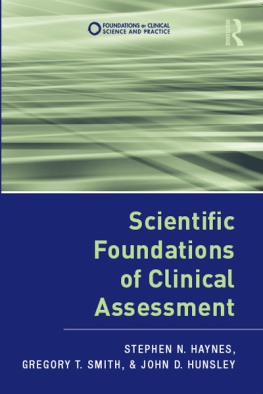Improving Impact Assessment
Westview Replica Editions
The concept of Westview Replica Editions is a response to the continuing crisis in academic and informational publishing. Library budgets for books have been severely curtailed. Ever larger portions of general library budgets are being diverted from the purchase of books and used for data banks, computers, micromedia, and other methods of information retrieval. Interlibrary loan structures further reduce the edition sizes required to satisfy the needs of the scholarly community. Economic pressures on the university presses and the few private scholarly publishing companies have severely limited the capacity of the industry to properly serve the academic and research communities. As a result, many manuscripts dealing with important subjects, often representing the highest level of scholarship, are no longer economically viable publishing projects--or, if accepted for publication, are typically subject to lead times ranging from one to three years.
Westview Replica Editions are our practical solution to the problem. We accept a manuscript in camera-ready form, typed according to our specifications, and move it immediately into the production process. As always, the selection criteria include the importance of the subject, the work's contribution to scholarship, and its insight, originality of thought, and excellence of exposition. The responsibility for editing and proofreading lies with the author or sponsoring institution. We prepare chapter headings and display pages, file for copyright, and obtain Library of Congress Cataloging in Publication Data. A detailed manual contains simple instructions for preparing the final typescript, and our editorial staff is always available to answer questions.
The end result is a book printed on acid-free paper and bound in sturdy library-quality soft covers. We manufacture these books ourselves using equipment that does not require a lengthy make-ready process and that allows us to publish first editions of 300 to 600 copies and to reprint even smaller quantities as needed. Thus, we can produce Replica Editions quickly and can keep even very specialized books in print as long as there is a demand for them.
About the Book and Editors
Improving Impact Assessment: Increasing the Relevance and Utilization of Scientific and Technical Information edited by Stuart L. Hart, Gordon A. Enk, and William F. Hornick
As Environmental Impact Statements (EIS) become increasingly important in the policymaking process, it is vital that they be as complete and accurate as possible. The authors of this volume consider ways in which the development and evaluation of scientific and technical information for EIS can be improved. Addressing key legal, social, political, and ecological issues, they explore ways to facilitate communication between researchers and policymakers, evaluate the need for an Environmental Impact Assessment Network, and review case-study applications of new approaches.
Stuart L. Hart is assistant research scientist and project director at the Institute for Social Research at the University of Michigan and consultant to the Research and Decision Center, Medusa, New York. Gordon A. Enk is president of the Research and Decision Center, where William F. Hornick is an associate.
Improving Impact Assessment
Increasing the Relevance and Utilization of Scientific and Technical Information
edited by Stuart L. Hart , Gordon A. Enk , and William F. Hornick with James J. Jordan and Paul Perreault
The grant award by the National Science Foundation for this project was made in 1979 to the Economic and Environmental Studies Center (EES) of The Institute on Man and Science (IMS), Rensselaerville, New York 12147; the staff of the EES Center initiated and conducted the project. In the course of the project, the staff of the EES Center left IMS and founded a new, independent organization, The Research and Decision Center. The project and this report were completed by the research staff at The Research and Decision Center, Medusa, New York 12120. The final copy of the book manuscript was prepared at the University of Michigan's Institute for Social Research, Ann Arbor, Michigan 48106.
First published 1984 by Westview Press, Inc.
Published 2018 by Routledge
52 Vanderbilt Avenue, New York, NY 10017
2 Park Square, Milton Park, Abingdon, Oxon OX14 4RN
Routledge is an imprint of the Taylor & Francis Group, an informa business
Copyright 1984 Taylor & Francis
All rights reserved. No part of this book may be reprinted or reproduced or utilised in any form or by any electronic, mechanical, or other means, now known or hereafter invented, including photocopying and recording, or in any information storage or retrieval system, without permission in writing from the publishers.
Notice:
Product or corporate names may be trademarks or registered trademarks, and are used only for identification and explanation without intent to infringe.
Library of Congress Cataloging in Publication Data
Main entry under title:
Improving impact assessment.
(A Westview replica edition)
1. Environmental impact analysis. I. Hart, Stuart L.
II. Enk, Gordon A. III. Hornick, William F.
TD194.6.I55 1984 333.7'1 84-19531
ISBN 13: 978-0-367-01995-2 (hbk)
Contents
, Stephen Kaplan
, Rachel Kaplan
, Caal H. Petalch
, Elizabeth Peelle
, Maagaaet S. Haezo and William E. Haezo
, Diana Valiela
, Nellie M. Stalk
, James J. Jordan
, Ronald G. McLeod
, Etic L. Hyman, David H. Moteau, and Btuce Stiltel
, Benjamin F. Hobbs, Michael D. Rowe, Barbara L. Pierce, and Peter M. Meier
, Jamei R. Veaie and Richatd C. Smaidon
, Selina Bendix
, Ruth-Ellen Millet
, Robeit E. Hen&hau
, Shelby Smith-Sanclate
, Stuant L. HanJt
, Gnanvllle H. Seue.il and Stuan Kon.tu.ck
, Ltoyd C Inland
, Vennla Lundblad
, Samuel G Mugatt
, Shanon Vecken
, Nicholas C. Yost
This book encapsulates the diligent efforts of many persons to improve the scientific soundness, utility, scope, and usability of environmental impact statements and the process that produces them. We are indebted to a host of contributors who made the project and the symposium upon which these pages are based possible, who produced the individual essays in this volume, and who worked tirelessly in the production of the manuscript. Our sincerest appreciation is extended to Sidney Draggan and Richard Morrison of the Division of Policy Research and Analysis of the National Science Foundation, the funder of this research, symposium, and documentation effort; to the symposium participants and authors of the essays presented here; to Gerard Finin for his research and logistical support for the field study of the Greene County nuclear power plant siting case; to Judith Bayer, who served as project secretary; and to Rose Frisbee and Jeanette Lendrum, who worked many long hours in the typing of the draft manuscript. Finally, thanks must be extended to Jane Stanton for her careful yet efficient preparation of this manuscript.












